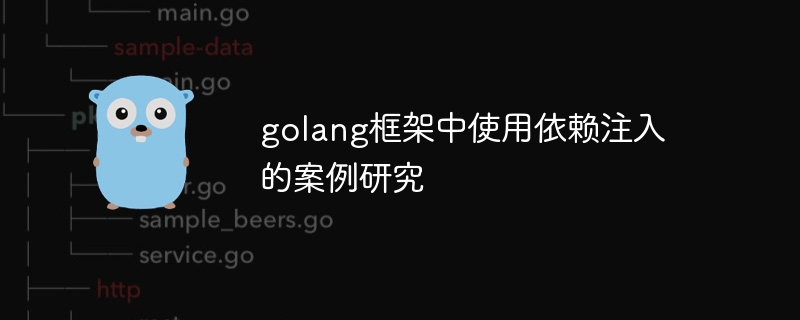在 go 中使用 wire 框架进行依赖注入可通过以下步骤实现:定义服务和存储库接口。创建服务工厂函数,将存储库依赖项作为参数。使用 wire.newset 创建一个依赖项集合,包括工厂函数和提供器函数。在集合中使用提供器函数提供存储库实现。在主函数中构建依赖项图并注入依赖项。

Go 框架中使用依赖注入的案例研究
依赖注入 (DI) 是一种设计模式,它允许我们通过将依赖项传递给需要它们的组件,而不是在组件内部创建它们,从而松散耦合我们的组件。这使得我们的代码更容易测试和维护。
Go 中有多个流行的 DI 框架,其中之一是 Wire。Wire 是一款简单易用且功能强大的 DI 框架,它遵循显式声明依赖关系的原则。
立即学习“go语言免费学习笔记(深入)”;
让我们创建一个简单的应用程序来说明在 Go 中如何使用 Wire 进行依赖注入。假设我们有一个 UserService 依赖于一个 UserRepository。以下是使用 Wire 创建和注入这些依赖项的代码:
import (
"context"
"github.com/google/wire"
)
type UserRepository interface {
GetUser(ctx context.Context, id int64) (*User, error)
}
type UserService struct {
repo UserRepository
}
func NewUserService(repo UserRepository) *UserService {
return &UserService{
repo: repo,
}
}
var UserServiceSet = wire.NewSet(
NewUserService,
provideUserRepository,
)
func provideUserRepository(ctx context.Context) UserRepository {
// 实际的UserRepository实现
return &UserRepositoryImpl{}
}在上述代码中,我们定义了两个接口 UserRepository 和 UserService。然后,我们创建了一个 NewUserService 函数来实例化 UserService,传入一个 UserRepository 依赖项。
我们使用 wire.NewSet() 创建一个 wire 集合,将 NewUserService 和 provideUserRepository 函数作为参数。后者是一个提供器函数,用于向集合提供 UserRepository 实现。
现在,让我们看看如何使用 Wire 注入这些依赖项:
import (
"context"
"fmt"
"github.com/google/wire"
)
func main() {
ctx := context.Background()
wire.Build(UserServiceSet)
userService, err := NewUserService(nil)
if err != nil {
panic(err)
}
user, err := userService.GetUser(ctx, 1)
if err != nil {
panic(err)
}
fmt.Println(user)
}在 main() 函数中,我们调用 wire.Build(UserServiceSet) 构建依赖注入图。然后,我们调用 NewUserService 函数,并通过将 nil 作为参数注入来获取 UserRepository 实现。最后,我们调用 UserService.GetUser 方法来获取一个用户。
通过使用 Wire 进行依赖注入,我们显著改善了我们的应用程序的可测试性和可维护性。
以上就是golang框架中使用依赖注入的案例研究的详细内容,更多请关注php中文网其它相关文章!

每个人都需要一台速度更快、更稳定的 PC。随着时间的推移,垃圾文件、旧注册表数据和不必要的后台进程会占用资源并降低性能。幸运的是,许多工具可以让 Windows 保持平稳运行。

Copyright 2014-2025 https://www.php.cn/ All Rights Reserved | php.cn | 湘ICP备2023035733号